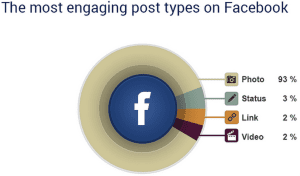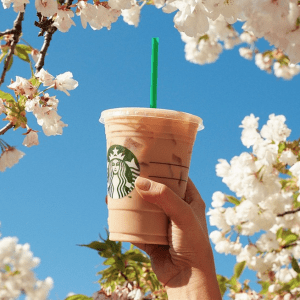by Melanie Torres
The art of visual storytelling is one that’s often overlooked. There are plenty of blog posts and articles detailing what kinds of posts do well on Facebook or how to properly use a hashtag in your social copy, and yet it takes so much more than knowing what to write on a social media post to guarantee engagement. If a picture is worth a thousand words, then your brand should be able to convey all kinds of amazing messages to your target audience simply by posting a dynamic, compelling image. In fact, 93% of the most engaging Facebook posts include a photo.

Making a mental note to post more photos isn’t enough. Brands that are making the most of their social media presence know that the quality of the image they post can make or break their reach and engagement. So what exactly makes a good photo, “good”?
As with most questions in social media, the answer is “it depends.” The best visuals need to match the overall brand image and voice, however there are a few key rules that we found tend to work across the board. See if the image you have in mind answers these 5 questions the next time you’re determining which photo to post on your social sites:
Does the image tell a story?
Imagine the individual who is looking at the photo has never heard of your brand before. Would they be able to gain a quick understanding of what your brand is all about simply from looking at the photo you post? It’s important to exercise care in selecting images that really showcase your brand’s story. For example, this image from Maybelline’s Instagram is extremely dynamic and really gives the viewer an idea of what their brand is all about – bold, unique, colorful beauty. It’s empowering and fun!
Is it visually appealing?
This may seem like a pretty obvious question but you would be amazed at how many brands overlook this important detail. Some people have a natural eye for what looks good, while others need to go through a little mental checklist. If you’re the latter, be sure to pay close attention to the image quality, perspective, lighting and central focus of the image. This post from Starbucks meets all the requirements of a visually appealing image and received over 230k likes.

Will it stand out in a crowded Newsfeed?
With over 1.7 billion users on Facebook and 300 million monthly users on Instagram, to say the social scene is saturated is a bit of an understatement. Social media users have a pretty short attention span, and if your image doesn’t grab their attention right off the bat you’ve already lost the battle for engagement. So how do you combat the crowded Newsfeed epidemic? Make sure your image stands out! Ask yourself if this is an image that will elicit some kind of emotional response from the viewer. Will it make them say “wow”, put a smile on their face or have them truly laughing out loud? Is it something that they will want to turn around and share with their friends and family? This example from Lululemon has the “wow” factor that will make people want to stop and stare.
Is it relatable?
Perhaps the most important key to successful visual storytelling, it’s crucial to post images that your target audience can relate to. Who is your customer? What does he/she like to do? Keep in mind that the image doesn’t always have to feature something your brand sells. In fact, it’s much better to be a brand that isn’t completely self absorbed! Case in point, this image from BaubleBar shows they know exactly who the “BaubleBar girl” is and also provided a more exciting way to showcase a fun quote on a very visual platform.

Is it unique?
No one likes stock photos. Actually, we should say that social media users typically do not like stock photos that look exactly like what you would see in an advertisement for any other company. Make sure your image is unique to YOUR brand. This relates back to rule #1: “Does the image tell a story”, but instead of just “a” story, you should determine if the image tells “your” story. Just look at this image from BarkBox. It’s funny, quirky, and cute – and not something you’d typically see for other brands.
Applying these five key principles the next time you prepare to post an image should greatly enhance your visual storytelling game. If you have any other tips and tricks when it comes to the art of visual storytelling we would love to hear them! Just post a comment below.


